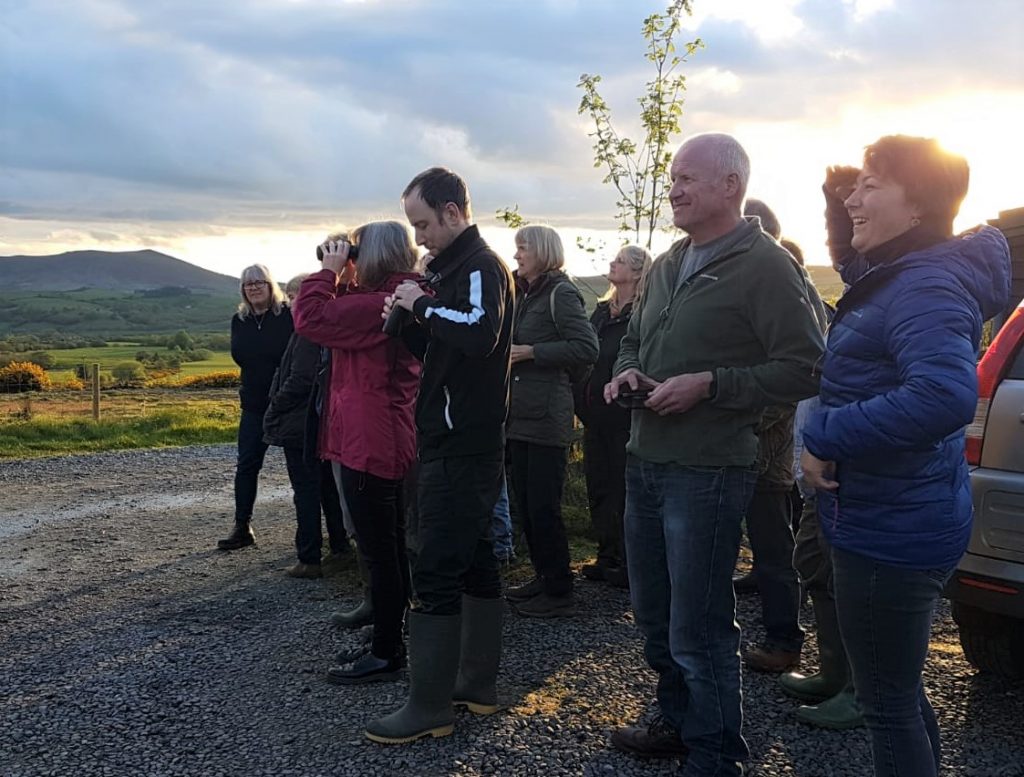In early May 2019, we invited a number of our volunteers to attend an evening about curlew nest finding. The aim was to help others to help us and to improve our chances of finding those outlying curlew pairs which remain elusive. Every year we are newly reminded of the struggle to find these nests, especially with the ever-variable weather conditions altering rates of grass growth. We are especially lucky to have Tony Cross as project ornithologist, bringing his wealth of expertise and tireless enthusiasm throughout the season to locate nests.
It is however difficult for one person to cover such a large area, and all of the territories it contains. It is for this reason that our volunteers are so important, as they can walk footpaths and rights of way, stake out from vantage points and report back any suspicious curlew behaviour.
But what counts as suspicious curlew behaviour? Well there are many different behaviours to look out for, but as with most things it can be difficult to predict! Certainly, seeing one bird on its own is a good sign, as it points to the other being sat on the nest. Seeing curlew mobbing or chasing away other birds or livestock is also a sure-fire sign that that pair have something to protect. Quite often you will see one bird standing guard in a field, watching the area around the nest in case of any lurking predators or other threats.
Luckily for us we were able to show our keen volunteer team a curlew sitting on a nest from a hidden vantage point. We did a short demonstration of walking along a nearby footpath whilst others watched on to show how easily the birds could be disturbed from the nest. Often, the bird will get up and walk away before then flying out to draw attention away from the nest itself.
It is important to us that the welfare of these beautiful waders is always put first, therefore we do not  encourage our volunteers to go into fields looking for the exact nest site. This is because the birds are easily disturbed, and if they are in the early stages of nesting may even be put off. We do not want to keep birds away from the nest for long periods of time, as this could allow eggs to go cold and become infertile. It is also important to note that in fields of very long grass it can be extremely difficult to find the nests until you are almost on top of them, and it is essential to avoid accidental trampling. .
encourage our volunteers to go into fields looking for the exact nest site. This is because the birds are easily disturbed, and if they are in the early stages of nesting may even be put off. We do not want to keep birds away from the nest for long periods of time, as this could allow eggs to go cold and become infertile. It is also important to note that in fields of very long grass it can be extremely difficult to find the nests until you are almost on top of them, and it is essential to avoid accidental trampling. .
After our time in the field watching the pair, we returned to the office to answer questions, and provide focus areas for people. We are lucky to have a large custom OS map centred on our area which was passed around whilst sightings were pointed to and discussed at length.
After a successful evening we felt so grateful to have such keen supporters, willing to come and help us preserve the call of the curlew for future generations.

